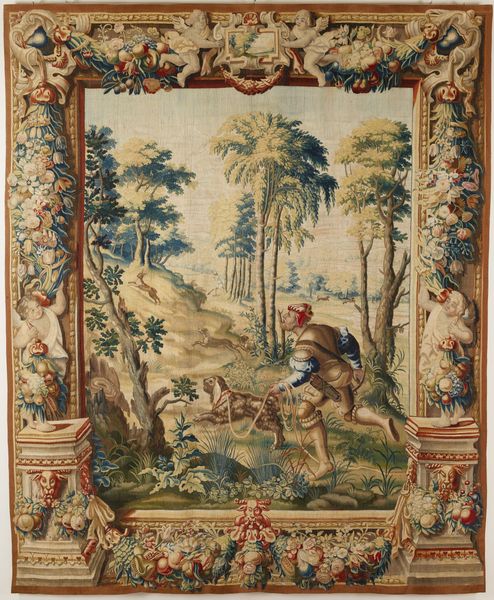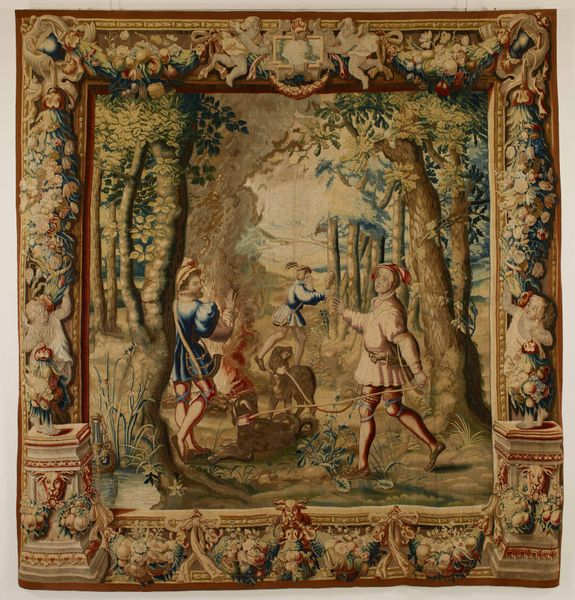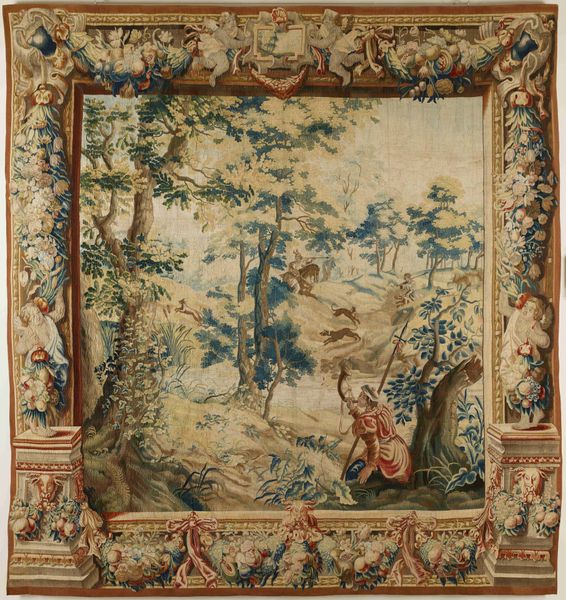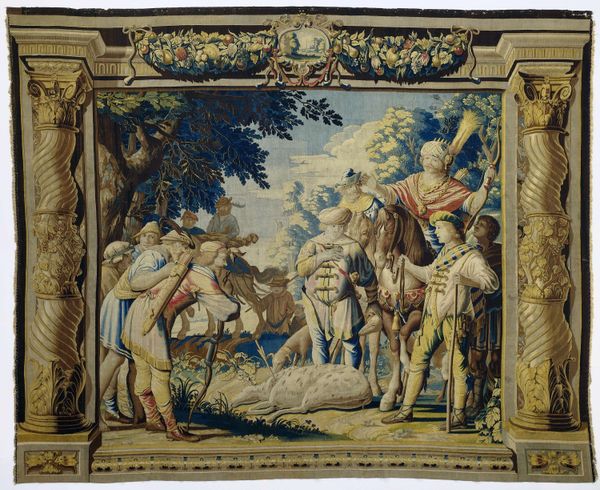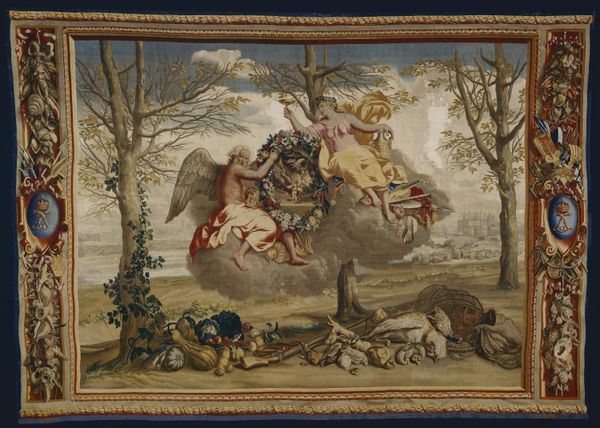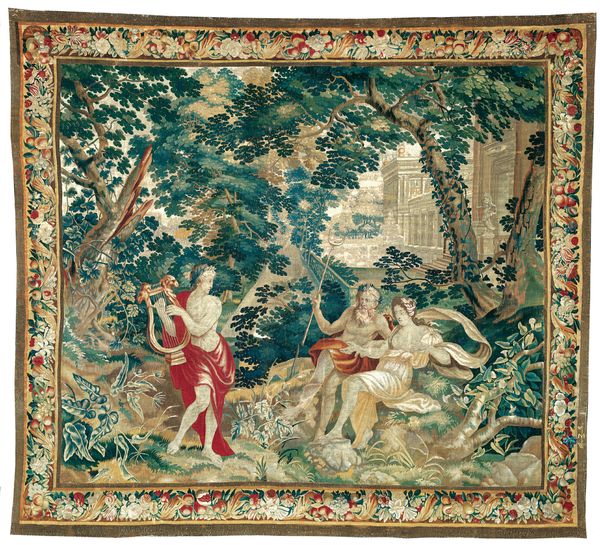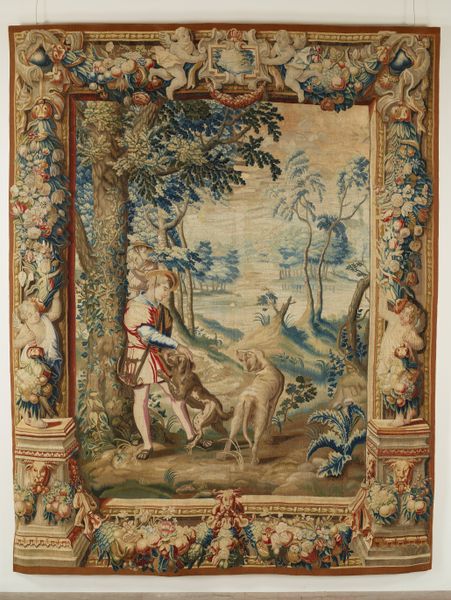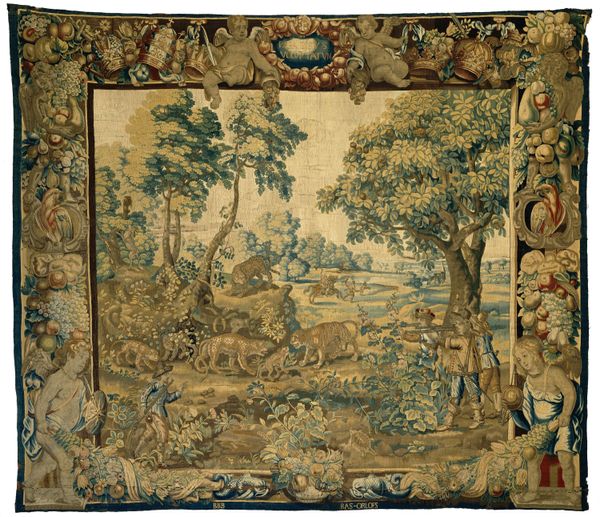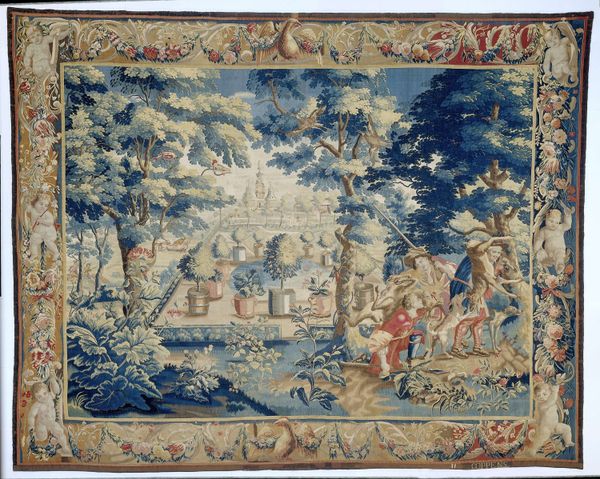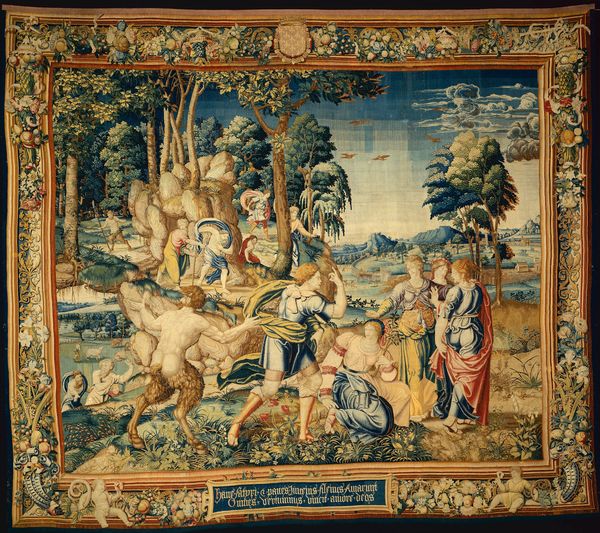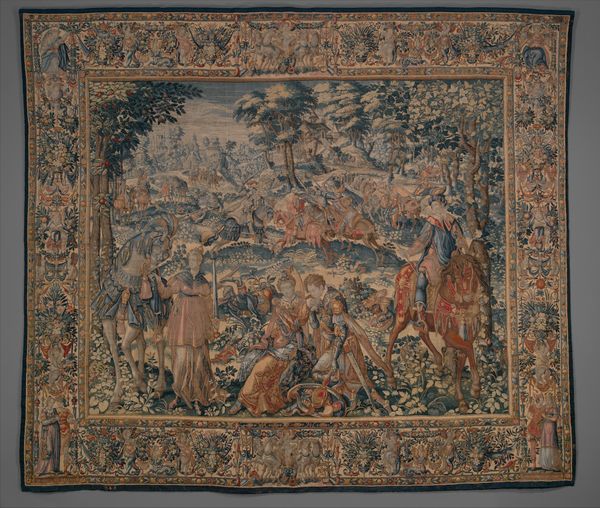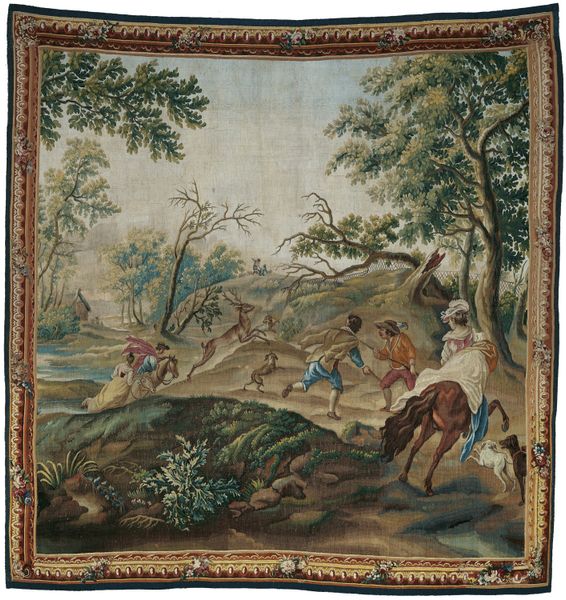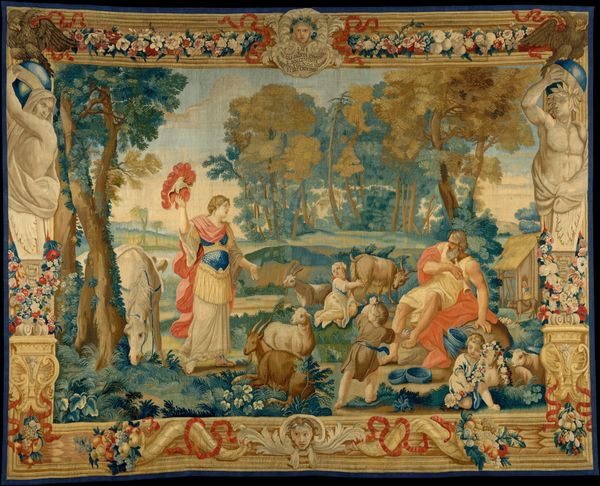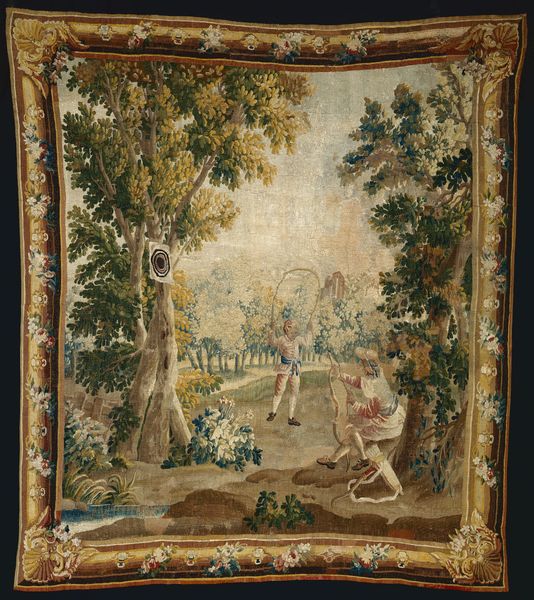
silk, textile
#
narrative-art
#
baroque
#
silk
#
landscape
#
textile
#
figuration
Dimensions: 162 3/4 × 172 1/2 in. (413.39 × 438.15 cm)
Copyright: Public Domain
Editor: We’re looking at "Hunting the Stag," a mid-17th-century tapestry made of silk. It’s anonymous and strikes me as a real whirlwind of activity. What symbolic meanings do you see woven into a piece like this? Curator: Consider the stag itself. Throughout history, it often represents nobility, both in the sense of social class and inner virtue. The hunt, then, isn’t merely a sport but a ritual. Does the stag’s imminent death amplify, or diminish, these associations, do you think? Editor: That’s fascinating! It almost feels contradictory. If the stag represents virtue, does hunting it then symbolize the pursuit or even destruction of those qualities? Curator: Precisely! The forest itself adds another layer. Forests were often viewed as spaces of moral ambiguity, places where societal rules didn't fully apply. Notice, also, how these aristocratic hunters and dogs become almost swallowed up by the landscape, miniaturized by nature, in a sense. The tapestry acts as a reminder that even figures of authority can find themselves vulnerable. Does this contrast between order and chaos create tension for you? Editor: Absolutely, now I see it. The tapestry initially feels decorative, but it's speaking to complex ideas about power, nature, and morality. Curator: Exactly. The symbols embedded within invite viewers to consider these enduring human concerns, echoed and reimagined across cultures and centuries. These hunting scenes served as potent allegories of life's pursuits and the ever-present tension between civilization and the natural world. Editor: I hadn't considered all those layers of meaning. It's more than just a pretty hunting scene! Curator: Indeed. Tapestries such as "Hunting the Stag" encapsulate prevailing cultural values. Visual symbols offer a lens for viewing memory and cultural attitudes, too.
Comments
minneapolisinstituteofart almost 2 years ago
⋮
Hunting the Stag is one of a five-tapestry series titled “The Hunt.” Mia acquired four of the five in 1933; this purchase completes the set. As a whole, the series provides a window into the culture of the hunt in early modern European social contexts. Hunting the Stag shows the moment when a stag has been captured and the lead hunter is about to separate the hounds from the quarry so that he can claim the animal with his spear. Historically, this was one of the noblest forms of hunting because the quarry was the most prized, but also because par force hunting – chasing game with a pack of dogs – was the most physically challenging. Pursuing deer with hounds was regarded as the noblest form of hunting. It was the most challenging physically, and the quarry—ideally a mature male red deer, considerably larger than the North American white-tailed deer—was prized above other game. A less prestigious method called “bow and stable” involved driving the quarry into an enclosed area and following it with a bow and arrow. While hunting in general was seen as both a noble pursuit and a form of peacetime training that kept leaders combat ready, hunting deer with hounds ranked at the top.
Join the conversation
Join millions of artists and users on Artera today and experience the ultimate creative platform.
